ADP hits a two-year low! The dollar plummeted and gold soared, and the expectation of interest rate cuts ignited the bull carnival
- 2025年6月6日
- Posted by: Macro Global Markets
- Category: News
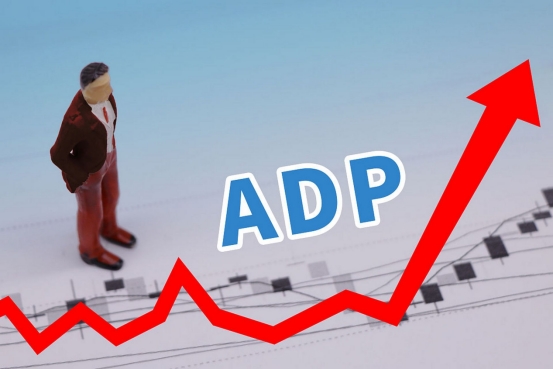
On the evening of June 4th, Beijing time, the US ADP employment data for May (commonly known as "small non-agricultural") shocked the market with 37,000 new jobs, which was only one-third of the expected value of 110,000, and the lowest increase since March 2023. After the data was released, the US dollar index plunged 20 basis points in the short term, once falling below the 99 mark to 98.9783, and spot gold soared by $6 to $3,354.52 per ounce, highlighting the market's concerns about the economic outlook and the surge in risk aversion demand. Combined with the US ISM service PMI for May released on the same day, which fell to 49.9 (the first contraction in nearly a year), and the policy impact of the Trump administration's increase in steel and aluminum tariffs to 50%, gold bulls ushered in multiple positive resonances.
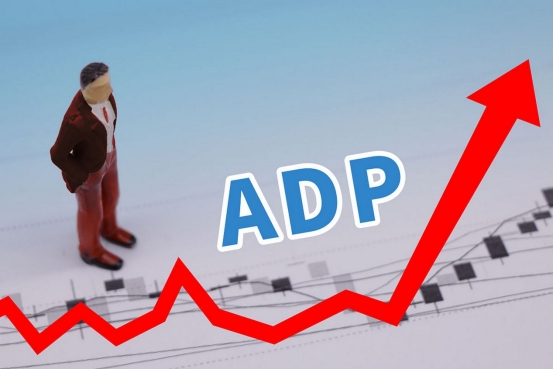
The weakness of the ADP data this time far exceeded market expectations. Previously, the market generally predicted that private sector employment would increase by 110,000 in May, but the actual number was only 37,000, and the April data was revised down from 80,000 to 60,000, indicating that the labor market is cooling down rapidly. After the data was released, the financial market reacted quickly: the US dollar index fell to 98.9783, a three-month low; the 10-year US Treasury yield plummeted by 0.58% to 4.421%, reflecting investors' growing concerns about slowing economic growth.
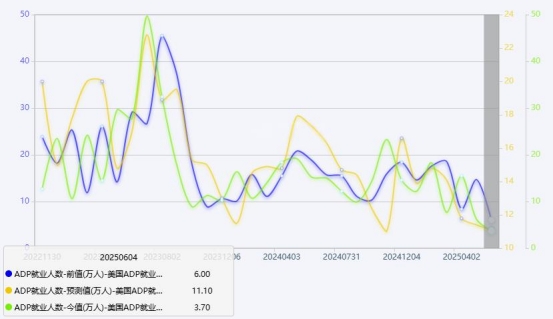
This data directly reinforced the market's expectations for the Fed to cut interest rates. The CME Fed Watch tool showed that the probability of a rate cut in September rose from 75% before the data was released to 87%, and some traders even bet that the June 19 interest rate meeting might release a clearer easing signal. Before the data was released, Fed Governor Cook warned that tariffs could push up inflation and reverse the recent downward trend in inflation, but the market is more concerned about the impact of the weak labor market on policy.
2. The shrinking service industry + tariff impact, gold's safe-haven value is highlighted
The US ISM service PMI for May released on the same day further exacerbated market panic. The index plummeted from 51.6 in April to 49.9, falling below the boom-bust line for the first time since June 2024, and the new order index plummeted 5.9 points to 46.4, the largest drop in nearly two years. Among the sub-items, the payment price index jumped to 68.7 (the highest since November 2022), indicating that corporate cost pressures are still accumulating, while the employment index fell from 50.2 to 49.2, confirming the deterioration of the labor market.
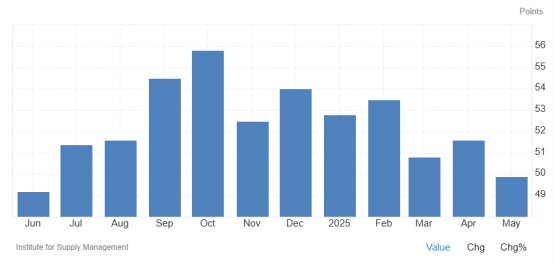
In this context, gold, as a traditional safe-haven asset, has been sought after by funds. On Wednesday (June 4), spot gold closed up 0.56% at $3,372.18/ounce, and hit a high of $3,384.52/ounce during the session, a two-week high. On the technological front, the daily gold price stood firm on the 50-day moving average, the RSI index rose to 55, and the MACD red column was enlarged again, indicating that the bullish momentum has recovered.
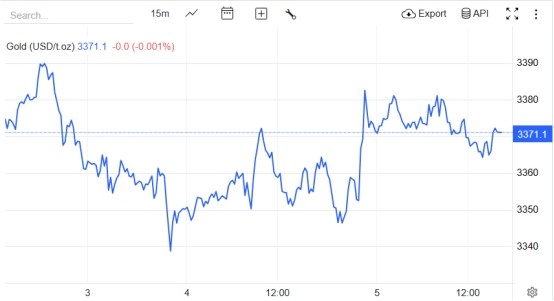
Although market expectations for rate cuts have increased, the non-farm payrolls data to be released on Friday (June 6) remains a key variable. The market currently expects non-farm payrolls to increase by 125,000 in May and the unemployment rate to remain at 4.2%. If the data is also weak, it may further strengthen expectations for rate cuts and push gold to $3,400; on the contrary, if non-farm payrolls exceed expectations, it may trigger a reassessment of the resilience of the labor market, leading to a short-term pullback in gold.
The surprise of the small non-farm payrolls data and the shrinking service industry, coupled with the impact of tariff policies, have jointly ignited the enthusiasm of gold bulls. In the short term, gold is expected to challenge the $3,400 mark driven by the expectation of interest rate cuts and risk aversion demand, but we need to be wary of the volatility caused by the non-farm payrolls exceeding expectations. In the medium and long term, the start of the Fed's interest rate cut cycle and the intensification of global economic uncertainty will allow gold to continue to play the role of "king of crisis hedging".
